Everyone hates spiders. And if we weren’t so afraid of them, we’d be stomping all of them flat with extreme prejudice.
But while we’re busy demonizing these eight-legged freaks, have we ever stopped to consider what they think about us?
Wait, can spiders even think? Aren’t their brains too small for that kind of thing?
It may surprise you to know that spiders are, in fact, quite clever. Sure, they’re incapable of the complex thought processes that we humans are, but they’re far from mindless, organic automatons.
With that in mind, let’s explore the fascinating world of spider intelligence.
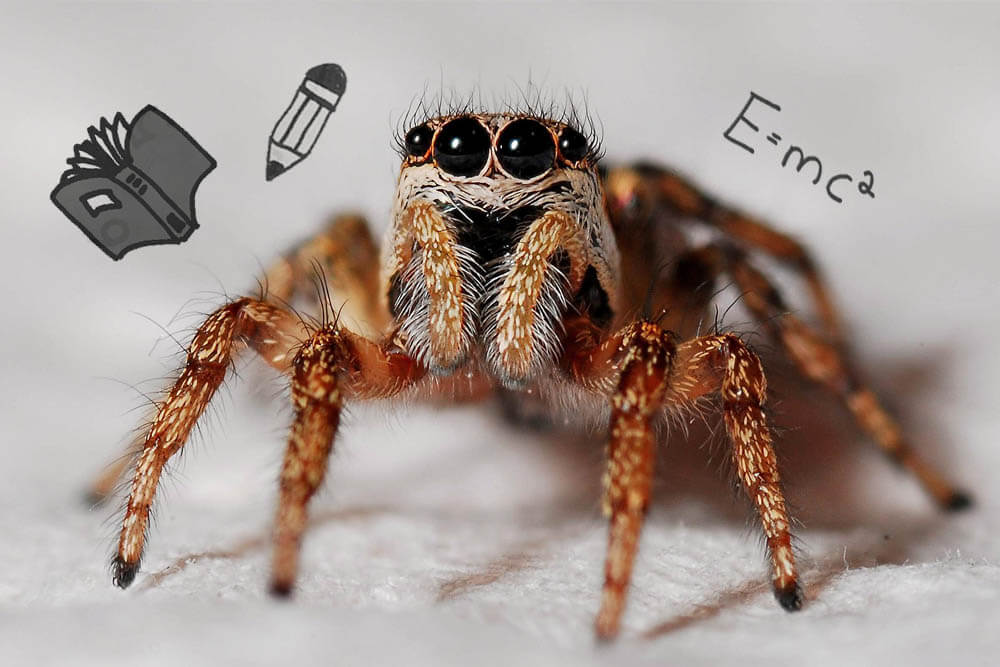
How Smart Are Spiders? Here’s What the Science Says
We tend to think that the bigger the brain, the smarter the organism. Unfortunately, this is a misconception science has disproved time and again.
Time and again, researchers have observed tiny creatures performing sophisticated behaviors that hint at cognitive function. This suggests that many of their actions are deliberate (performed with intent) as opposed to reflexive (elicited automatically in response to stimuli).
For example, jumping spiders – often hailed as the cleverest of all spiders – can use their sharp eyes to locate, hunt, and attack prey. These are feats that many people would cite as proof of intelligence if larger-brained animals such as dogs exhibited them. Not bad for creatures with brains so tiny they can fit on a pinhead!
Below, we’ve compiled 8 key behaviors that prove spiders are more intelligent than we think.
1. Spiders plan
Spider researcher Robert Jackson discovered that when members of a spider genus known as Portia spot prey a great distance from them, they plan out an intricate route to reach it. For example, instead of entering a prey spider’s web, Portia goes around the web, relocates to a higher position, uses a strand of silk to lower itself just above the prey, then attacks.
Arachnologists Fiona Cross and Jackson devised a test to examine just how smart Portia is. They built an obstacle course consisting of towers surrounded by water. From its perch at the central tower’s summit, a Portia spider could see food on top the second tower, dead leaves atop the third, and the twisting walkways that connected the central tower to the others.
The researchers consistently observed every spider carefully surveying the scene, then selecting the correct walkway to their meal. What’s even more remarkable about this is that the correct walkway initially curved away from the food, meaning the spiders understood that though the route would lead them away from the food, it would eventually take them to the food.
The researchers claim that this suggests the spiders formed a mental representation of the obstacle course, allowing them to plan the route taking them along the correct walkway to their desired destination.
2. Spiders can sense numbers
In another version of their obstacle course test, Cross and Jackson wanted to determine how Portia spiders would react if the research team altered the number of the creatures’ prey mid-hunt.
First, the team allowed a Portia spider to see that only a single prey spider was up for grabs at the top of a tower. As Portia navigated the walkway toward it, the researchers added a second prey spider to the tower. Upon arrival at said tower, Portia was more hesitant to attack two prey spiders. The effect was the same when one prey spider was increased to three, or two or more were reduced to one.
To these Portia spiders, however, there seemed no difference between three spiders and more than three prey spiders. Any number over two was lumped into a single category: “many.” This suggests jumping spiders’ capacity to sense numbers is somewhat similar to that of a human child around a year old.
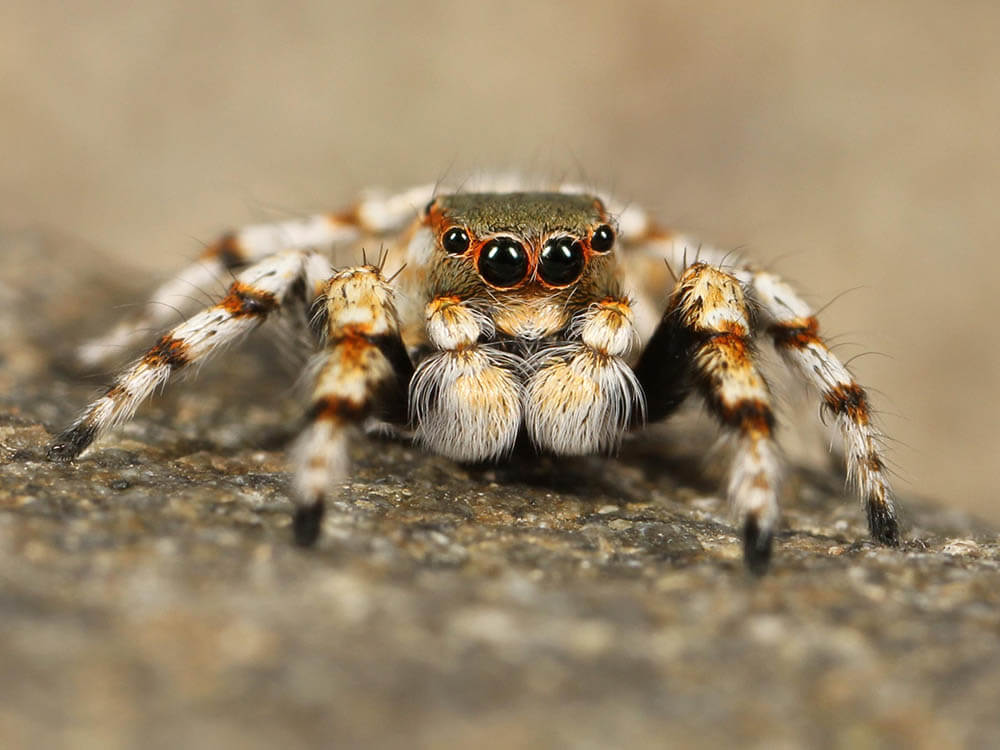
3. Spiders play tricks on their prey
According to Jackson, Portia devises different hunting strategies depending on what kind of prey they’re hunting.
For example, Portia mimics the mating behaviors of male Euryattus spiders, which involves shaking the nests that females like to hide in. This lures the unsuspecting female out of her nest, leaving her vulnerable to an ambush by the waiting Portia.
Portia has a different strategy for web-building spiders. If the prey spider is small, Portia plucks the web’s silk strands lightly to mimic the movements of a trapped insect. This attracts the target spider’s attention, causing it to charge toward the source of the vibrations. Once it’s close enough to Portia, Portia attacks.
When the web-spinning prey is larger, Portia’s plucking is gentler so that the vibrations are similar to those created by a fruit fly. This makes the prey emerge from its hiding place and slowly approach the source of vibrations to investigate. Portia then ambushes this prey.
In short, Portia’s plucking technique changes depending on the size of the prey spider. This in turn proves Portia recognizes the fact that various prey types come in different shapes, sizes, and behaviors.
Portia may even shake the entire web to make it seem as if it had been hit by a gust of wind, allowing it to traverse the web undetected as it makes its way to its prey.
4. Spiders evaluate danger
While efficient killers themselves, spiders are preyed on by a range of creatures, including birds, lizards, insects, and other spiders. Spiders therefore evolved to have the ability to assess risks so they can avoid getting killed.
In one study, a platform was positioned in the middle of a water-filled tray. A Portia spider was then placed on this platform. To reach the edge of the tray, the spider had to hop between tiny wooden islands protruding through the water surface.
Most of the Portia spiders chose the shortest route that required the fewest leaps. Those that picked the longest route cheated by skipping islands whenever the path curved; in other words, they took shortcuts.
It took the spiders a while before figuring out their routes, but to animal behavior researcher Ximena Nelson, this is a sign the creatures were considering their options before committing to a decision.
5. Spiders can be surprised
Infants and spiders have one thing in common: they can’t tell you what they’re thinking about. However, by surprising either, it’s possible to deduce what’s on their mind.
For example, if a human baby sees a toy truck disappearing behind a barrier’s left side, but the toy that emerges from the right side is a stuffed rabbit, the baby is more likely to stare at the rabbit for a longer period than if the toy that emerged was the anticipated truck. This shows that the child had a mental image of the truck and was expecting said truck, and was therefore confused when a rabbit appeared, instead.
Cross and Jackson exposed Portia spiders to a similar test. First, they showed a spider a specific kind of prey sitting inside a display for half a minute. Then, they closed the display’s shutter and swapped out the prey for a different type of prey. Once the shutter was reopened 90 seconds later, Portia was less inclined to attack the new prey. This indicates that the spider, like the human baby, was expecting the original prey because it had created a mental representation of it that didn’t match what the new prey looked like.
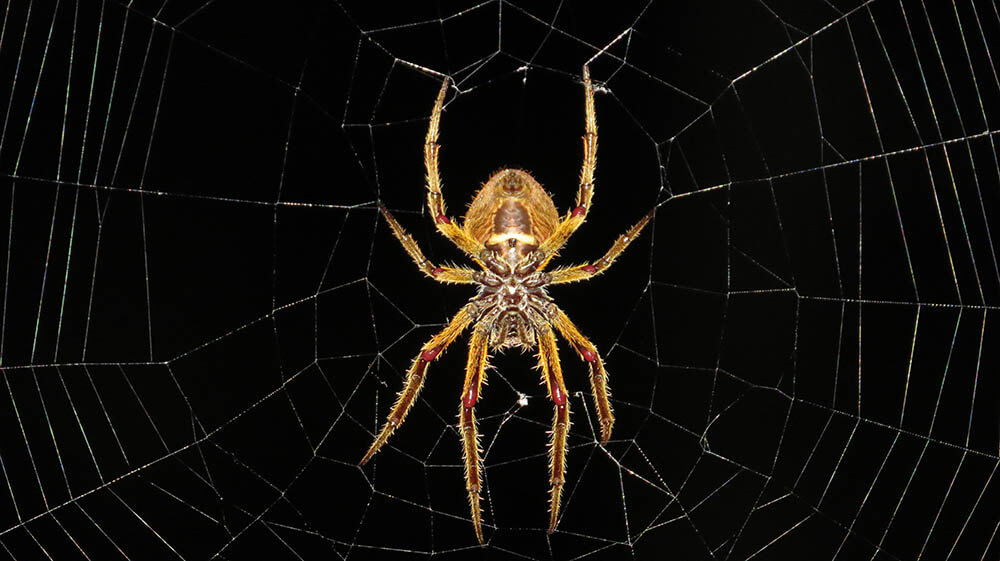
6. Spiders have memories
Web-weaving spiders were originally considered less intelligent than jumping spiders (i.e. spiders that actively hunt their prey). The revelations by recent studies, however, are causing shifts in opinions about these weavers.
In one experiment, researchers let spiders grow accustomed to webs that contained trapped prey. Then, these spiders were relocated to different webs without food.
The researchers observed the spiders pulling at the strands of silk and examining the vibrations—they were searching for the captured prey they’d originally seen. Even when new, living prey were placed elsewhere on the webs, the spiders kept looking for the original prey. This suggests that spiders have memories, allowing them to remember where food is located.
There’s even evidence that spiders learn from and remember their experiences. For example, if a specific area of its web catches prey, a spider will improve the construction of said area so that it has a higher rate of success when it comes to capturing prey.
7. Spiders can be trained
Similar to dogs, some spiders can be trained to associate certain stimuli with rewards.
In 2008, researchers conditioned spiders to associate the odor of vanilla (stimulus) with food (the reward), which in this case was nectar. Yes, spiders eat nectar—they’re not completely bloodthirsty!
The researchers found that the conditioned spiders were able to find nectar considerably quicker than the unconditioned spiders. This suggests that spiders can learn, which is surprising given their tiny brains.
8. Spiders may be self-aware
Because animals can’t tell us what’s on their minds, it’s challenging to prove without any reasonable doubt that they’re capable of self-awareness—or the ability to consciously know that one exists.
Interestingly enough, a recently discovered genus of orb-weaving spiders called Cyclosa exhibits a specific behavior that hints at the possibility of self-awareness. Researchers continue to observe these creatures building webs that feature enormous replicas of themselves—replicas that come complete with spider heads, legs, and bodies! Think giant self-portraits, but instead of using paint or charcoal, these spiders use silk, jungle debris, and even the corpses of their prey.
These effigies aren’t for the sake of vanity, though. They’re decoys designed to scare away smaller predators. As the Cyclosa grows in size, they build larger and larger decoys. While all this isn’t irrefutable evidence of self-awareness, it does suggest the individual Cyclosa is aware of its own appearance, and how said appearance is unique when compared to others’.
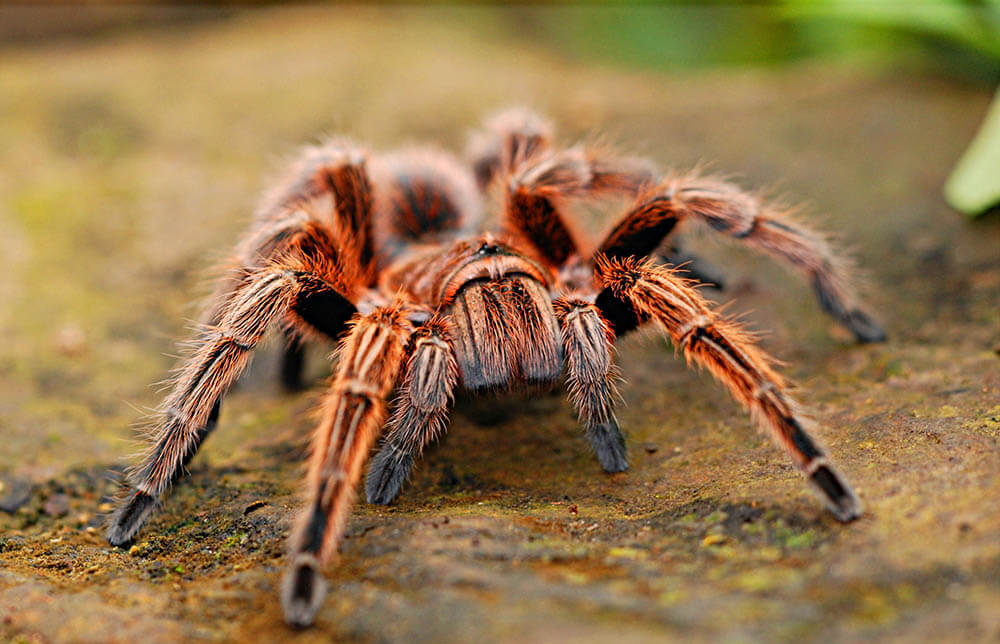
Other Signs of Spider Intelligence
If the above information about spiders impresses you, know there’s more where that came from!
Vibrations
Spiders can distinguish between different types of web vibrations. For example, the vibrations a captured prey makes aren’t the same as those produced by a male spider that’s navigating the web in search of a mate. The spider then uses this knowledge to act accordingly. If the thrashing is caused by prey, it attacks. If it’s due to the movements of a potential mate, it prepares for courtship.
Web reconstruction
Spider webs are fragile things; anything from a strong gust of wind to a passing animal can damage or even destroy a web.
But this isn’t a big issue for spiders; after all, they can rebuild webs from memory. How do researchers know this? New webs often feature the exact same details as previous ones’, from the spirals’ angles to the distance between spirals.
Adaptability
Spiders will change their diet depending on food availability. Spiders generally eat insects, but if those insects grow scarce, spiders will eat nectar as discussed above. Also, species that primarily feed on specific bugs (e.g. termites, ants) will consume other types of bugs (e.g. flies) if raised on a different diet.
Size doesn’t matter
You’d think babies would be less capable of essential life skills than their parents. However, baby orb weavers are just as good as their mothers at building webs.
Cooperation
Most spider species live solitary lives. Some, however, form colonies that can house thousands of individuals. These spiders build enormous communal webs and work together to attack and incapacitate captured prey. They also share their food with one another!
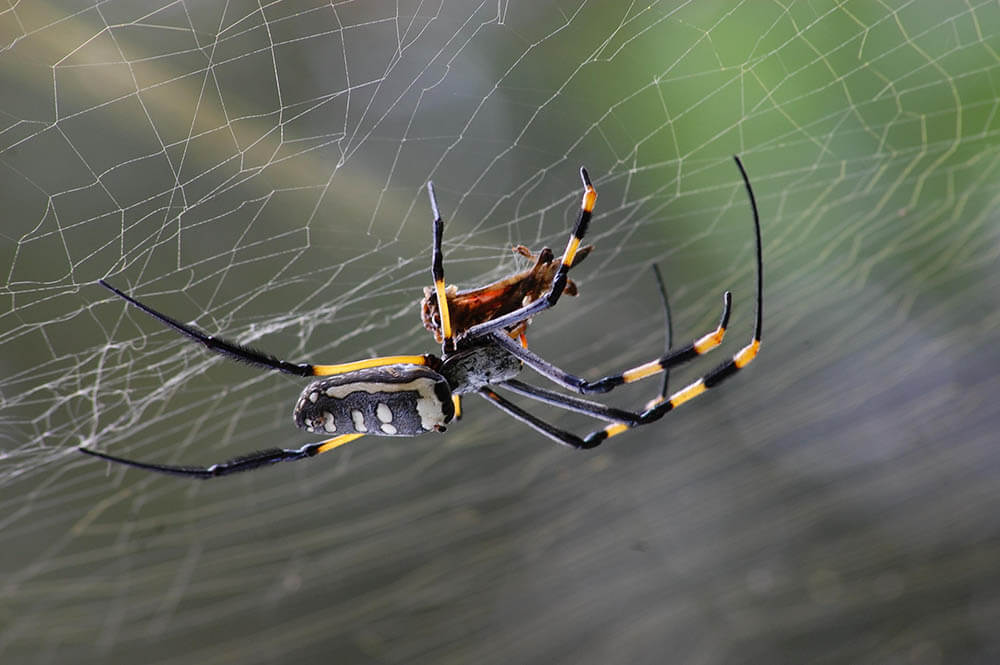
Final Thoughts
Spiders are amazing creatures with spectacular abilities. They outwit their prey and plan ambushes. They learn from experiences, reconstruct webs from memory, and assess risks. And among other things, they can even be trained like dogs.
These are all signs spiders are intelligent – perhaps not as intelligent as larger creatures with more complex brains, but they’re certainly smart enough to survive the many challenges nature throws at them on a daily basis.
So the next time you squish a spider, ask yourself: is it really worth hurting a creature whose friends and family may have the capacity to plot revenge?
